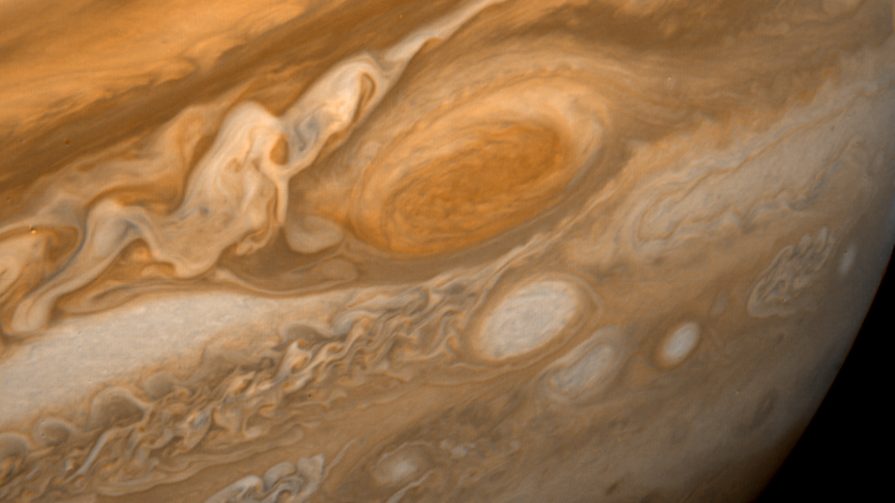Jupiter’s Great Red Spot is shrinking and speeding up

- Images from the Hubble telescope show that the Great Red Spot’s winds are shifting.
- The wind speeds at the edge have increased, while those at the center have decreased.
- Exactly why this is happening remains unknown.
Weather in the solar system can be rather extreme. For example, wind speeds on Neptune can reach 2,100 km/h (1,300 mph), the temperature on Earth’s moon can drop to a brisk -248 degrees C (-415 degrees F), and it rains helium and metallic hydrogen on the gas giants. But few of the extreme weather events in the solar system are as well known or enjoy as marketable a name as Jupiter’s Great Red Spot. And now, a study shows that the storm is getting more extreme.
The one and only Great Red Spot

The largest storm in the solar system, the spot is an anticyclone (a storm with a high center of pressure) in the southern “tropical” region of Jupiter. Known for its color, the spot is easily visible (in black and white) to any backyard astronomer with a small telescope. Larger telescopes or special lenses are needed to see the color.
Possibly observed by Giovanni Domenico Cassini as early as 1665, the spot has been the subject of a tremendous amount of attention for hundreds of years. For reasons unknown, it was depicted as red as far back as 1711 in artwork, but no written records exist that demonstrate scientific knowledge of its color before the 1800s.
Much like computing technology, the Great Red Spot has been getting smaller and faster over the last few years. While still roughly 16,000 kilometers (10,000 miles) wide, big enough to contain the Earth, it is merely half the size of what it was a century ago. It is also increasingly more circular and less oval-shaped than it used to be.
The Hubble Space Telescope has regular check-ins with the Great Red Spot. The images it takes, and has taken for years, allow scientists to get an idea of how quickly the storm winds are blowing. In this study, data from 2009 to 2020 was used. Computer models calculated that the storm winds have increased along the outer edge of the spot by as much as eight percent. At the same time, the winds in the center of the storm have slowed down.
The changes were subtle and only noticeable with the wealth of data provided by Hubble. A press release explains that the changes amount to “less than 1.6 miles per hour per Earth year.” The findings also surprised the research team, with co-author Amy Simon explaining:
“We’re talking about such a small change that if you didn’t have eleven years of Hubble data, we wouldn’t know it happened. With Hubble we have the precision we need to spot a trend.”
Storm clouds
Why is the Great Red Spot shrinking yet getting faster? Scientists aren’t sure. Hubble can only tell us what the storm looks like, not what is going on underneath it. However, there are a few possibilities that the study points to- such as vortex oscillations, variations in the wind sheer of the flow around the spot, and more complex changes below the clouds of Jupiter.
Future studies, perhaps relying on satellites currently closer to Jupiter, may be required to fully understand what is happening to the most famous storm in the solar system.





